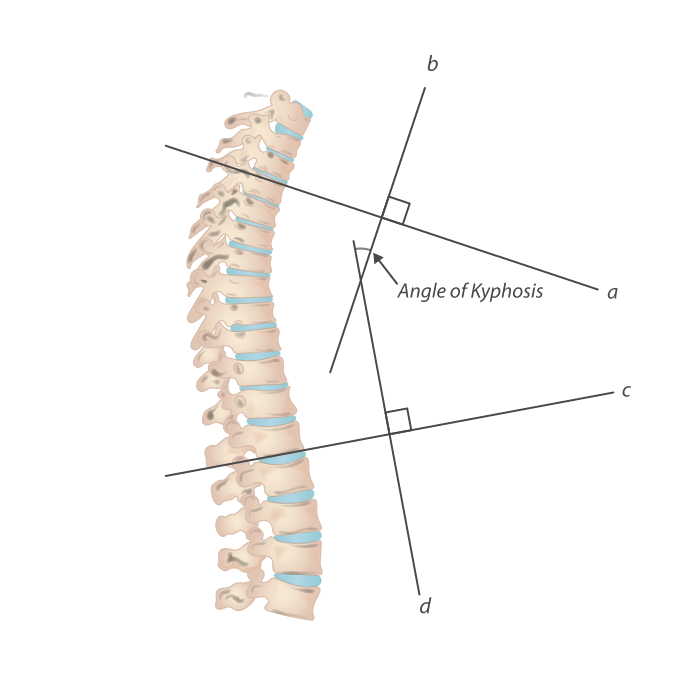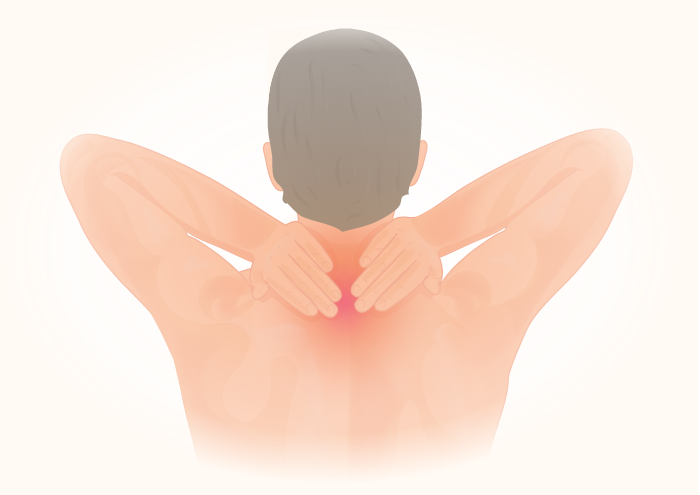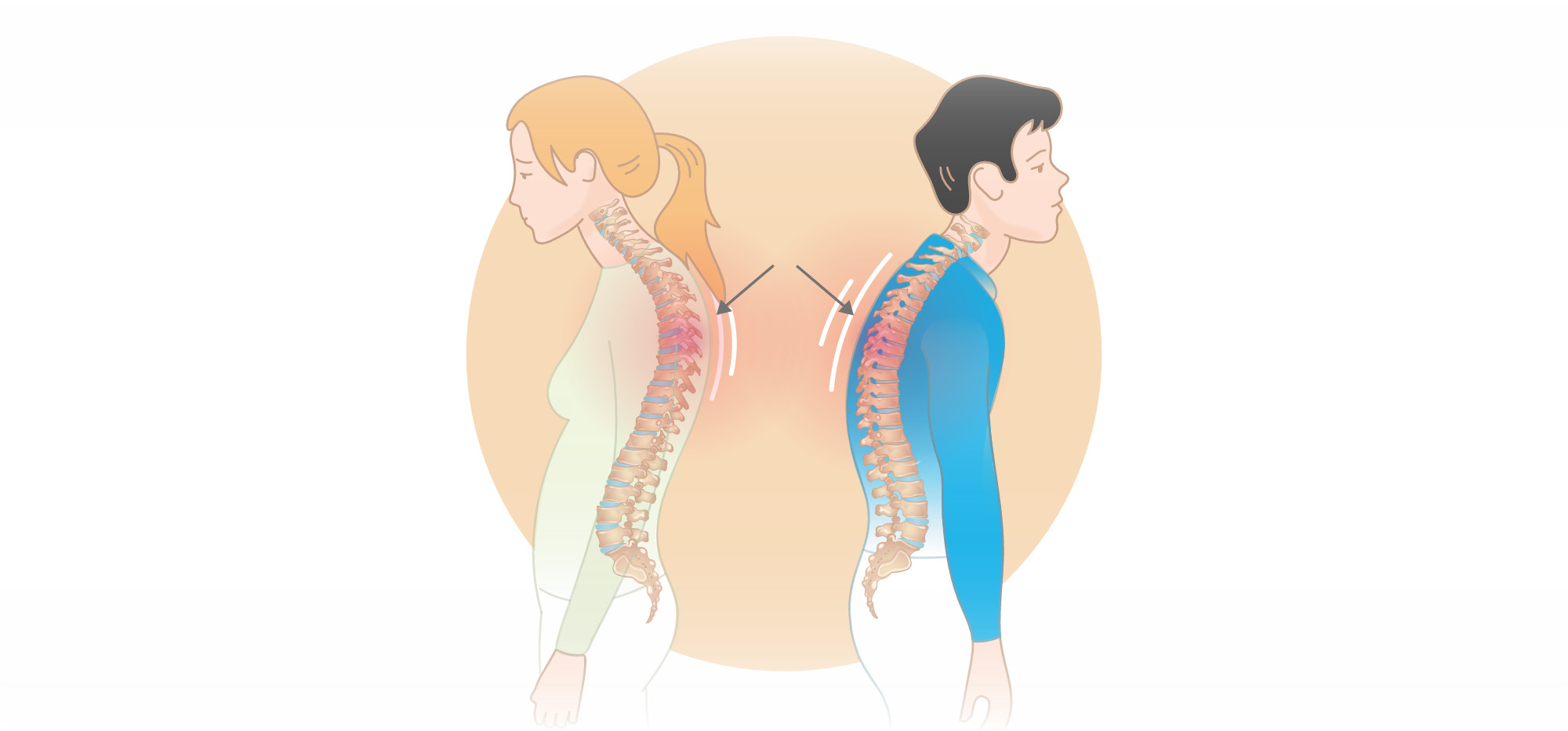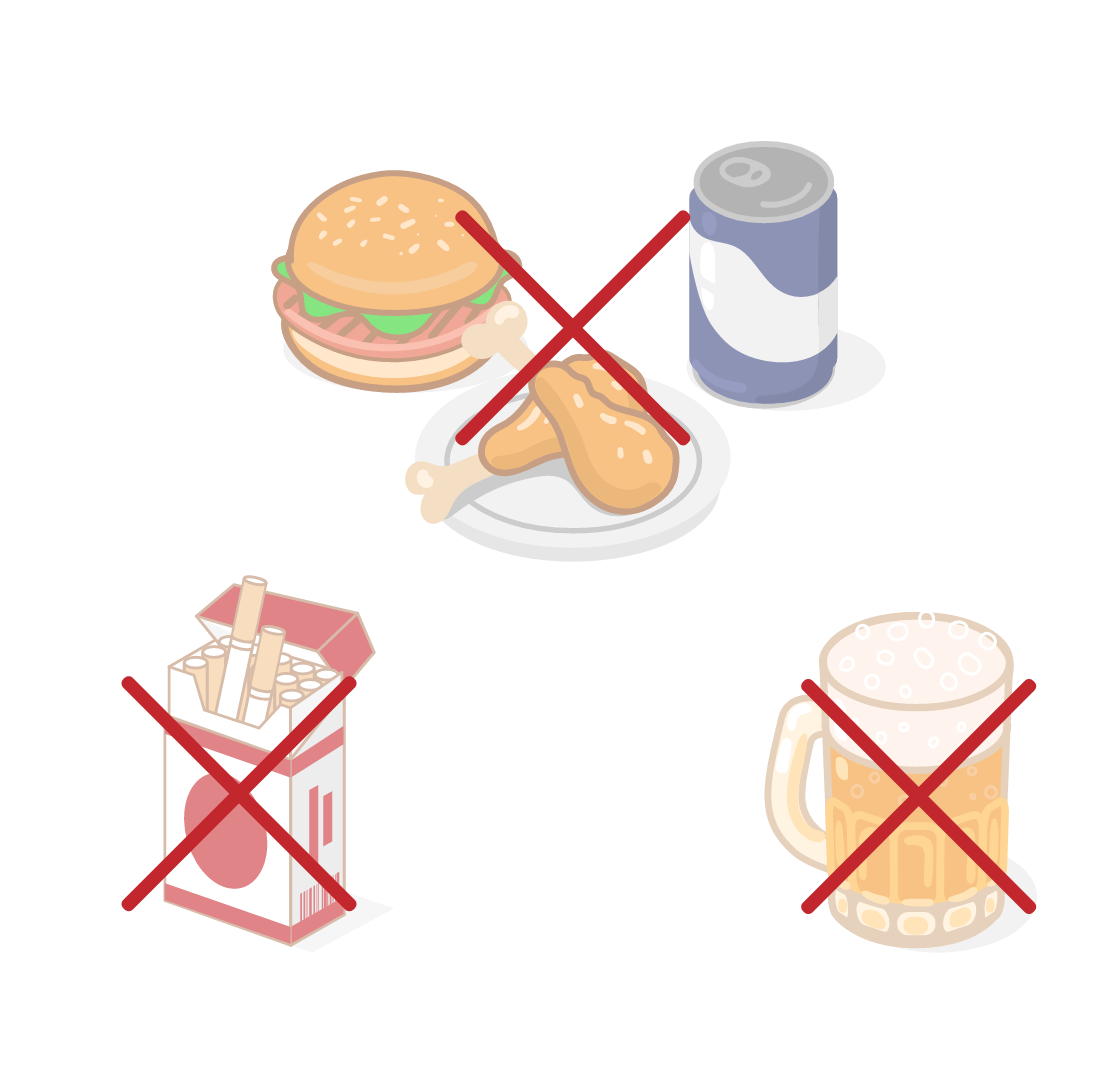Dowager’s hump is estimated to affect two out five people above the age of 55. There are a number of things that can cause you to develop a Dowager’s hump. The most common sources are degenerative diseases or muscle weaknesses. Regardless of the cause, it negatively affects your quality of life.
Early intervention and treatment of this condition can alter its course and provide many health benefits. In this guide we offer evidence-based options to treat Dowager’s hump and help you prevent it from getting worse.
Content
- What Is Dowager’s Hump?
- Measurement Of Hyperkyphosis
- Common Causes Of Dowager’s Hump
- Symptoms Of Dowager’s Hump
- Treating Dowager’s Hump
- Preventing Dowager’s Hump
- Do’s and Don’t in Dowager’s Hump
- Dowager’s Hump Can Be Fixed
What Is Dowager’s Hump?
Dowager’s hump or hyperkyphosis is an excessive curvature of the spine. Usually, this occurs in the thoracic or chest curve of the spinal column. Often it is also simply called kyphosis, which is a forward curvature of the spine.

The spine has a natural curve. If you look at a 3-D model of the spine, you’ll notice that it has a convex curve in the chest area. This is due to the natural shape of the spinal bones and the discs between them. At 40 degrees of curvature, the spine is considered healthy as it falls in the 95th percentile of spine measurements in young adults. Curvatures of over 40 degrees are deemed problematic and can create a small hump at the back of the neck.
Have you noticed a small hump of the back of the neck? With the right exercises, habits and posture correction you can completely remove it. Start exercising with Injurymap’s app to get rid of your Dowager’s hump
From childhood till the age of 30, the angle of the spine changes due to the increased weight on it – from 20 degrees to 29 degrees. After you turn forty, the angle rapidly increases as the degenerative processes of aging begin.
Because osteoporosis (weakening of the bones) is more common in women, so is Dowager’s hump. With osteoporosis you get weaker spinal bones, which leads to a higher disposition towards Dowager’s hump.
Among men, the average curvature angle is around 44 degrees. In women, it can range from 3 degrees at age 55 to 52 degrees at age 80. You’ll notice that people get shorter as they age. The average person loses about half an inch with every decade due to the compression of the spine.
Measurement Of Hyperkyphosis
The gold standard for measuring hyperkyphosis is an X-ray. These radiographs are the best tool for orthopedic assessment of the thoracic or chest kyphosis angle. If the person can’t stand for some reason, they can do a supine radiograph, but the lateral or sideways X-ray is the best.
The kyphosis angle (or “Cobb’s angle”) is measured by drawing perpendicular lines on the radiograph. The line extends through the upper endplate of the vertebral body, where the thoracic curve starts at the T4 vertebrae and the lower endplate of the vertebral body at the end of the thoracic curve at T12 vertebrae.

Common Causes Of Dowager’s Hump
Dowager’s hump has not received the kind of scientific attention, osteoporosis, stroke, and cancer receive. Because it’s considered part of the normal “aging” process, it hasn’t been studied in great detail. As a result, the causes of Dowager’s hump haven’t been fully described. Yet, a few common causes for its occurrence have been identified
Degenerative Disc Disease
In many people with Dowager’s hump, radiographic findings have revealed degenerative disc disease. The majority of older adults who do have Dowager’s hump tend to have degenerative disc disease, without evidence of vertebral fractures or osteoporosis.
Vertebral Fractures
As the number of vertebral fractures increases, the kyphosis becomes more pronounced. This applies more so for thoracic/higher vertebral fractures than lower/lumbar fractures. Women who have multiple anterior thoracic wedge fractures have very prominent kyphosis. If you’ve had vertebral fractures in the past, you are at risk of developing Dowager’s hump.

If you have Osteoporosis the daily stress on the spine can cause it to develop compression fractures and vertebral wedges. Osteoporosis is a condition where the bones soften and become weak, due to a lack of dietary calcium and vitamin D. With time, as the number of wedges increase, the density of the bone mineral decreases. This leads to more compression fractures. This creates a vicious circle that increases the likelihood of getting hyperkyphosis.
Weak Muscles
Weak spinal extensor muscles are associated with Dowager’s Hump, according to studies. We have large back muscles holding up the spine. In post-menopausal women in good health, the weaker the spinal muscles, the higher the kyphosis angle. Exercise can strengthen the spinal muscles and thus hold the spine erect. This will help maintain the natural curvature of the spine. If you think only the spinal muscles can affect the spine, think again. In reality, posture is affected by many muscles of the body.
Get stronger with Injurymap exercise app and choose the program for neck pain
Impaired Mobility
Age affects many of the contributing, ligaments, joints, muscles, and connective tissues, all of which affect posture. How they may contribute to kyphosis is not yet identified. However, with decreased spinal mobility, the ability to maintain a good posture and stand erect is reduced.
Genetics
Birth defects can cause kyphosis. If you were born with spinal defects, it can cause you to have a kyphotic spine later in life. One of these is Scheuermann’s disease or Scheuermann’s kyphosis. Commonly seen in boys, it can cause kyphosis. Here, the curvature increase occurs before the pubertal growth spurt occurs and can severely affect the spine.
Symptoms Of Dowager’s Hump

Physical and Functional Symptoms
Excessive hyperkyphosis can severely affect your physical and functional limitations. Women who have a severe Dowager’s hump have difficulty simply raising themselves from a chair. You will also have a reduced balance, slower gait, require a broader stance to support yourself, and cannot climb stairs quickly. As a result, you might be more prone to falls. Osteoporotic women tend to have a higher postural sway which also adds to their risk for falls.
If you have Dowager’s hump, then your overall level of functioning is affected. You have difficulty doing necessary activities around the house and their scores when it comes to activities of daily living are much lower compared to their healthy peers. If you’re developing Dowager’s hump, you might also notice the following symptoms:
- Muscles fatigue easily
- Gradual postural changes
- Chronic pain in the back, neck, and shoulders
- Loss in height
- Multiple vertebral compression fractures
- Protruding abdomen
- Repeated falls
- Back stiffness
- Pain in the hips
- No sensation in the chest area
Respiratory Symptoms
If you have Dowager’s hump, you might experience difficulty breathing. The added kyphosis puts pressure on your lungs, affecting their expansion and thus breathing. Breathing exercises and focusing on strengthening spinal muscles can help you to breathe fuller.
Digestive Symptoms
Severe progression of the Dowager’s hump can compress your digestive tract. As a result, you may have trouble with swallowing.
Psychological Symptoms
Dowager’s hump is disfiguring. Since most people don’t understand how it occurs and that it’s a part of natural aging, you may have to suffer labels such as “hunch-back” etc. All of this can psychologically affect you. In younger adults, it can lead to shame, aggression, and anxiety. Older individuals might feel isolated socially, and you may even feel depressed.
Quality of Life
With limited mobility and physical deformity, some women report physical difficulties with everyday living. If you’re a woman with Dowager’s hump, you may also require more adaptation and have higher fears about your ability to function. Overall, men and women who live with this condition, are less satisfied with their health, functioning, relationships, and economic conditions. As a result, you might limit your outdoor activities and public life, and this impairs your quality of life and level of functioning. Don’t let Dowager’s hump from living your best life. Have yourself diagnosed and then treated.
Diagnosing Dowager’s Hump
Apart from Xray’s, your doctor might suggest doing a CT scan, and an MRI may be recommended. He will do this is to evaluate your bones, the disc, the disc space, and to rule out any tumors or secondary causes of your symptoms. The doctor may also conduct a thorough physical examination.
Treating Dowager’s Hump
There are many treatment options for Dowager’s hump. They range from physiotherapy to surgery. The sooner you treat it, the more effective you will be in halting its progression. Studies have shown that with the right exercises and treatment, Dowager’s hump can be halted from getting worse if identified and treated early. Here’s a look at some of them.
Physiotherapy And Example Exercises
Physiotherapy is the mainstay of the treatment of Dowager’s hump. If you take medications or get surgery, the muscles, joints, and bones that assist and make up your spine need to be strengthened. Your treatment choice will vary depending on the severity, but it will have to be supplemented with physiotherapy if it isn’t your primary treatment choice.




